BLANCHARD JUNIOR KNOCKABOUT, HULL NO. 7
A Small Boat Perfect for a Highly-detailed Ship Model
Replicate a Classic Small Boat in a Large Scale Model
Blanchard Junior Knockabout, Hull No. 7 is an example of the popular “day-sailer” sailboat, which was developed to adapt to the economic realities of the Great Depression and to cater to the working class.
Constructed sometime between the late 1930s and the early 1950s, the principal dimensions are: Length (oa): 19′-1″;Beam: 6′-2 and 5/16″
The original owner is unknown, the boat is currently in the collection of The Center for Wooden Boats, Seattle, King County, Washington
Blanchard Junior Knockabouts are 20′ open sloops with short fore and aft decks and long cockpits that can easily accommodate six adults on bench seats. The boats are constructed of full-length red cedar carvel planking over steam-bent oak frames. In addition, they have handsome spoon bows, tucked up oval transoms, and inboard rudders. Blanchard Junior Knockabouts shared initial stability due to their wide beams at waterline, and they also have heavy weather stability due to their cast-iron keels.
Blanchard Junior Knockabouts featured a sloop rig with a sail area of 210 square feet. Spars are varnished spruce; standing rigging is 1×19 stainless steel wire with bronze turnbuckles; running rigging was Manila with bronze blocks, turnbuckles and bronze tangs; deck hardware was also bronze.
The keel and transom were constructed of Philippine mahogany; the stem of oak; planking was 13/16” western red cedar or Philippine mahogany.
The ballast keel was a 550 lb. cast-iron fin with bulb; a hatch at transom gives access to clamp on an outboard motor. Transom is metal shod and recess is furnished with a copper pan scuppered overboard.
During the Great Depression, there was still a demand for recreational boats, albeit at reasonable prices. Boatyards that had achieved fame by building 100′ yachts had to adapt to the economy to keep their crews busy. As a result, naval architects and boat designers switched their client focus from the wealthy to the working class. The Great Depression, therefore, became a golden age for small day-sailing boats and fast one design racing boats.
The Blanchard Boat Company of Seattle’s Lake Union was one such company that adapted to the economic realities of the 1930s. Its founder, N.J. Blanchard, had started commercially building yachts for the wealthy at the age of 15. In 1932, Blanchard designed a 26′ cruising sloop with cabin accommodations for two and a well for an outboard motor. This sloop design, known as the Blanchard Senior Knockabout, sold for less than the popular 23′ Star Class because of the simplicity of its rig and the ease of construction.
Next, N.J. Blanchard designed a 20′ open sloop, which was a scaled-down version of the 26′ one. The 20′ Blanchard Junior Knockabout was popular with houseboat dwellers in Lake Washington. From the 1930s to the 1960s, there were about 25 of these sloops available for rent at the Lake Washington Yacht Basin at the foot of Leschi Park.
As of 2008, The Center for Wooden Boats has five Blanchard Junior Knockabouts as part of its livery and sailing instruction programs.
The small size of this boat means that the ship model builder can create a model to a large scale that allows intricate detail not possible with larger ship models. A model at 1” = 12” (1:12) would result in a model that would still fit on a desktop, but would hold a fantastic level of detail.
The scratch-builder could even recreate the original steam-bent frame construction method of the original boat.

Blanchard Junior Knockabout, Hull No. 7 was documented for the Historic American Engineering Record HAER No. WA-181 by The Center for Wooden Boats staff in 2008
Sources: Lincoln, Leslie. Coast Salish Canoes. Seattle, WA: The Center for Wooden Boats, 1991.
Todd Croteau, HAER Maritime Program Coordinator, produced the large-format photographs and the measured drawings with Sam Johnson, Heron Scott, and Kim Diorio.
To Support The Center for Wooden Boats, click HERE
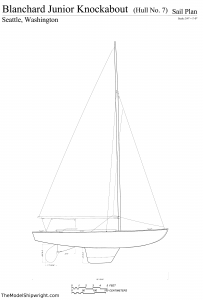
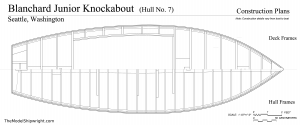
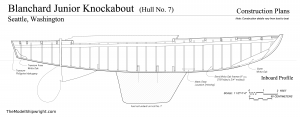
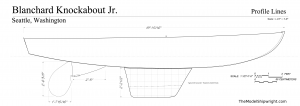
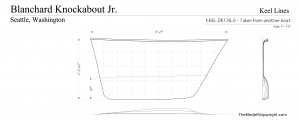
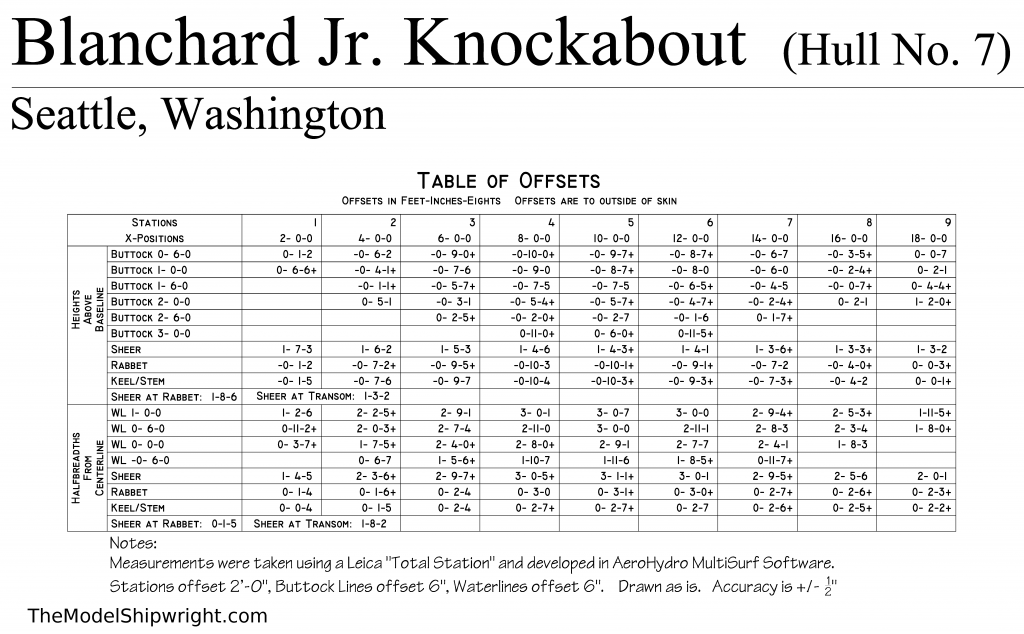
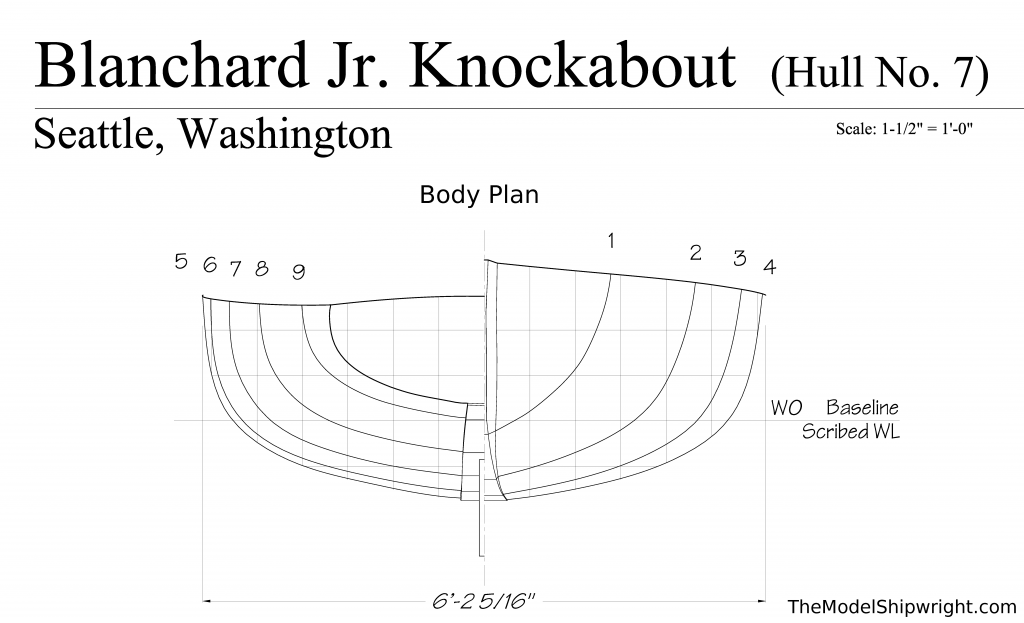
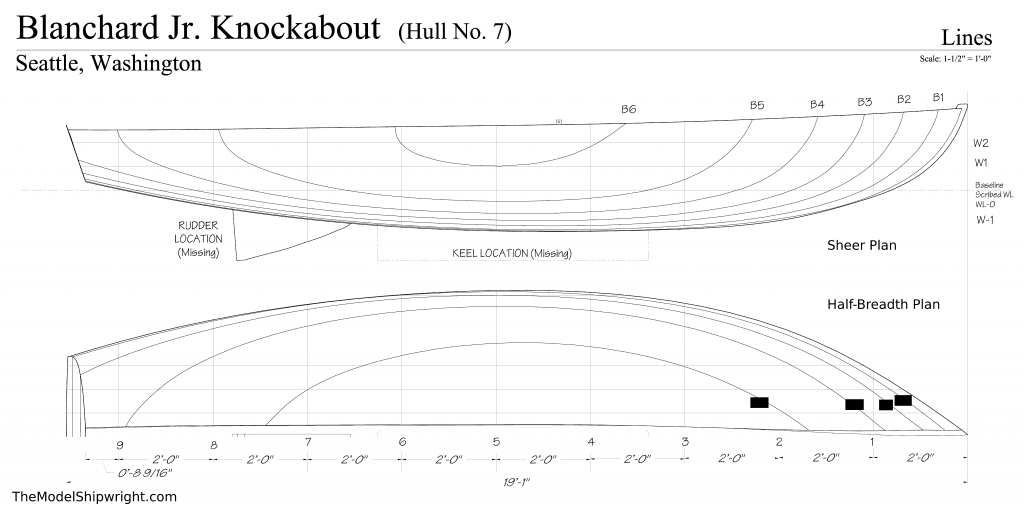
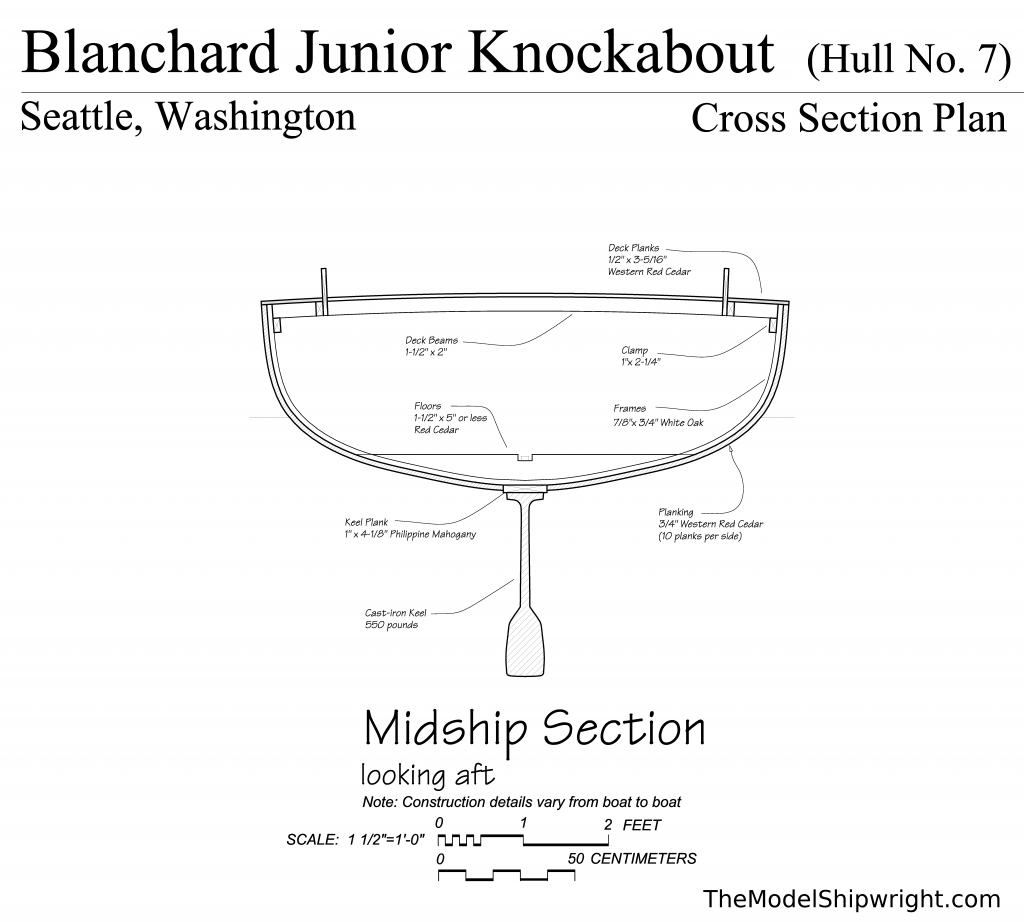
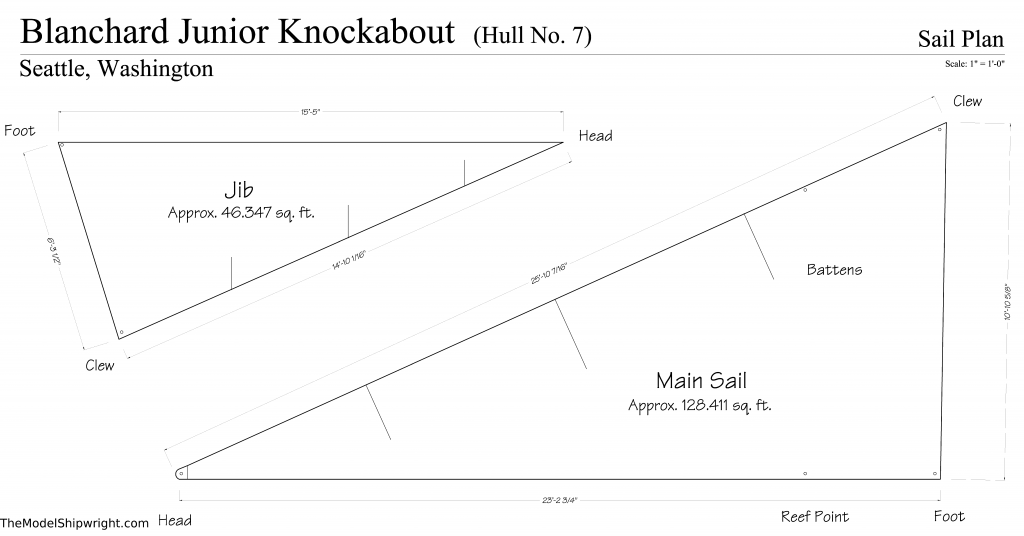
[…] Blanchard Junior Knockabout […]
[…] Blanchard Junior Knockabout […]